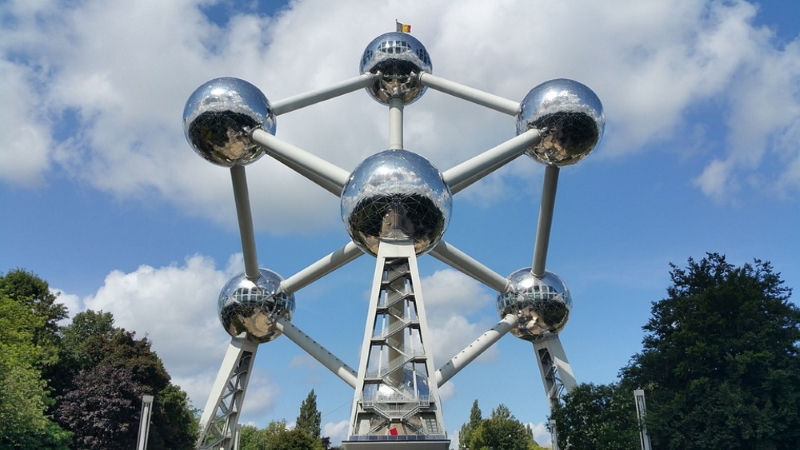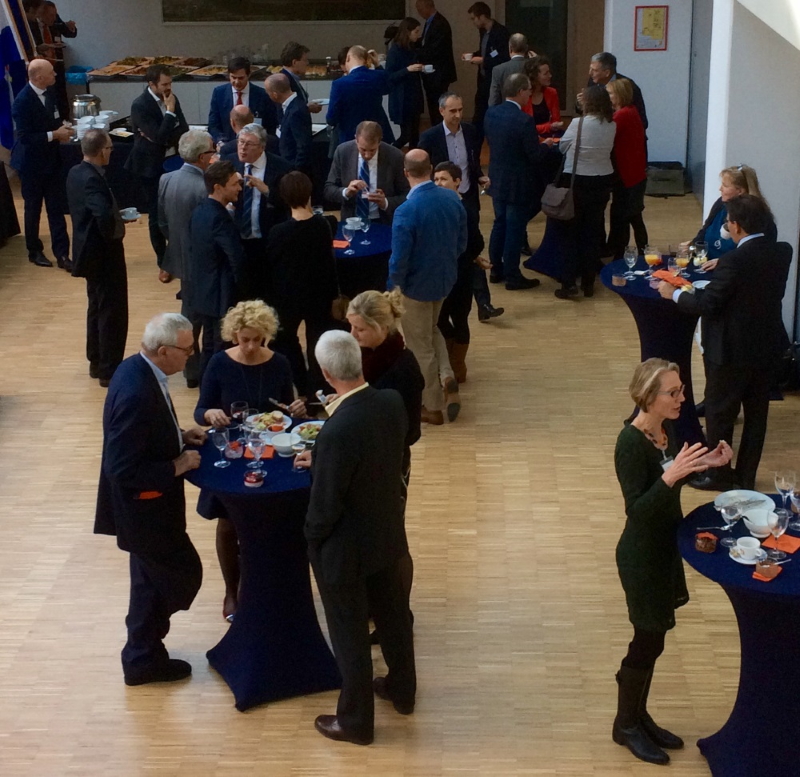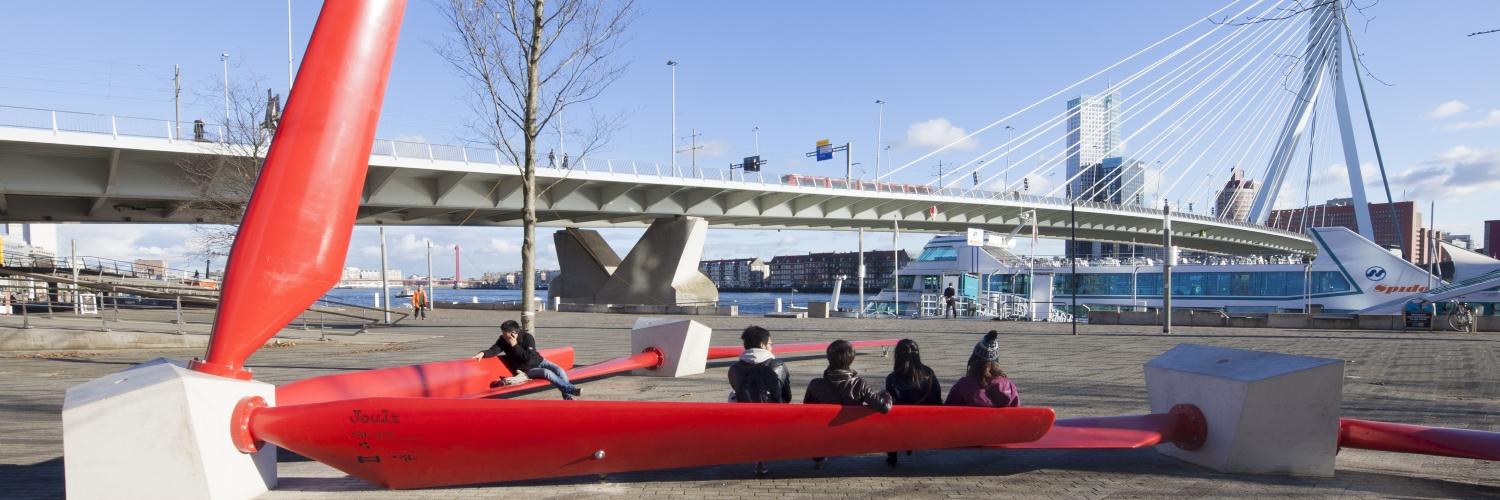7 December 2016
Innovation and investment in the European circular economy
EuroDay 2016 in Brussels
EuroDay 2016, an initiative by the DWMA and the Belgian Go4Circle, showcased several good examples of the circular economy. The conference showed that waste companies and governments are busily innovating and investing in the circular economy. Active cooperation is needed to implement the ambitious EU and national policies.
The circular economy has become a hot item over the past two years. Governments, public sector organisations and businesses are aiming to become '100% circular'. Fine words indeed, but what actually is the circular economy? A quick description is that a circular economy produces virtually no waste because discarded and end-of-life products are used again as high-grade resources in the manufacture of new products. At EuroDay 2016, held on 22 November in Brussels, it became clear that this is easier said than done.
Plans for the circular economy and innovative projects
Building the circular economy will require a huge number of innovations and massive investment. The main question explored at EuroDay 2016 was how EU policies can support such efforts. In the Dutch embassy in Brussels more than fifty participants were treated to an intensive programme packed full of content: three sessions with no less than eleven speakers, followed by a panel debate. The speakers talked about plans for the circular economy, innovative projects, what innovators need in practice and the obstacles they encounter. The conference was an initiative of the DWMA and its Belgian counterpart Go4Circle (previously FEBEM-FEGE), in cooperation with the Embassy of the Kingdom of the Netherlands and the Permanent Representations of the Netherlands and Belgium. The participants were members of the two organisations and representatives from governments and European associations.
Concerted cooperation
One Brussels insider at the conference complained that the circular economy sometimes seems to be little more than a well-intentioned recycling of good ideas. But there were also more positive messages to take away. First of all, the economics and environment ministries of various countries are working closely together. And this is also the case at the European level, as Magnus Gislev and Julius Langendorff confirmed in their presentation. Both work for the European Commission, Gislev at DG Growth, Langendorff at DG Environment. Together they are working on a roadmap with concrete actions for the transition to a circular economy, which is expected to be presented in 2017.
Magnus Gislev (European Commission):
"Already 980 companies across the whole of the EU are working together to meet our raw materials challenges."

The EU has made 600 million euros available for innovative research into recovering raw materials from waste
600 million euros for innovation
The European Commission is serious about stimulating the transition to a circular economy. At the end of 2015 European Commissioner Frans Timmermans published 'Closing the Loop', an EU action plan for the circular economy containing numerous measures for the 26 member states. Gislev confirmed that the EU has made 600 million euros available for research into innovative ways of replacing primary raw materials with secondary materials recovered from waste. 'We have drawn up a strategy for critical raw materials. Already 980 companies across the whole of the EU are working together to meet our raw materials challenges,' said Gislev. He encouraged the recycling and reuse sector to use more of this research funding.
International resources roundabout
At the conference
Robine van Dooren of the Dutch Ministry of Infrastructure and the Environment, explained what the
North Sea Resources Roundabout is doing. This initiative is a practical exercise outside the usual grant-funding channels. In this first international Green Deal, four North Sea countries are looking into the opportunities and constraints for free trade in secondary materials between them. One example is exporting Dutch compost produced by Twence for use in the north of England. Another is exporting aluminium and silver recovered from bottom ash in Dutch waste-to-energy plants for use in Flanders. 'Yet another case is the trade in PVC waste between England, France, the Netherlands and Belgium,' said Van Dooren. A fourth case on struvite - or secondary phosphate - has also been added to the list. Waste legislation, REACH and transport are being examined in more detail as part of the Green Deal.
Robine van Dooren (Dutch Ministry of Infrastructure and the Environment):
"We are looking at what the current legislation permits and we report bottlenecks directly to the European Commission."
Circular lime granules
Aalke Lida de Jong of the Dutch Industrial Secondary Raw Materials Association for construction and civil engineering (VIB) described several inspiring examples of innovative recycling and reuse. One of these concerns the use of lime granules. 'Lime granules produced during the process for softening drinking water are increasingly used in the manufacture of new products. They are used as substitutes for sand grains in Desso carpet backing and can also be used as a source of calcium for laying hens. Their use in solar cells is also being investigated.'
Learning from frontrunners
Some people consider the North Sea Resources Roundabout cooperative arrangement to be a sort of 'mini EU' within the EU. Van Dooren denied this, insisting that the intention is that the lessons learned by these frontrunners will inspire other member states to take steps towards the circular economy. 'We want to develop more cases, for example for electrical waste and tyres. We are looking at what the current legislation permits and we report bottlenecks directly to the European Commission,' said Van Dooren. She stressed that companies take part in the Roundabout entirely of their own accord and without any significant subsidy. 'Taking part in a case study is no guarantee of success.'
A Circular Economy in the Netherlands by 2050
The circular economy is high on the government agenda in both the Netherlands and Flanders. In September the Netherlands launched a government-wide programme for a circular economy called
A Circular Economy in the Netherlands by 2050. Its interim objective for 2030 is to reduce the use of primary raw materials by 50%. The environment minister, Sharon Dijksma, expects this will lead to more innovative small and medium-sized enterprises which will generate an additional annual turnover of 7.3 billion euros and create 54,000 extra jobs. They will enter into 'circular economy agreements' between 'relevant businesses and societal stakeholders', which will then set out concrete measures in 'transition agendas'.

Flanders
Flanders is also working towards a circular economy, as explained by Lieze Cloots of the Public Waste Agency of Flanders (OVAM). Thanks in part to efforts by the Flemish government - with a coordinated approach to separate collection, recycling centres, landfill bans and an incineration tax - Flanders is a European frontrunner which recycles 70% of its waste, incinerates 27% incineration and landfills 1%. The statistics show that this circularity has itself become part of the economy. 'Our waste industry is enjoying a 5% growth rate and with 12,000 jobs we account for 0.5% of the labour force,' said Cloots.
Lieze Cloots (OVAM):
"In 2020 materials recycling will save us 3.4 billion euros and create 21,000 extra jobs."
Plan C
But despite this, the improvement in Flemish waste management performance is stalling. OVAM has therefore come up with
Plan C (C for circular). 'In 2020 materials recycling will save us 3.4 billion euros and create 21,000 extra jobs,' said Cloots. 'Construction - including ageing-in-place buildings - the bioeconomy, metals and chemicals are the themes for the creation of circular cities, where the port is not just for exporting products, but is a recycling hub.'
Gold from bottom ash
Jan Peter Born of HVC talked about the new washing plant for cleaning incinerator bottom ash from the HVC waste-to-energy plant. Born passed around a heavy pot of metals. 'Those are all non-ferrous metals recovered from the bottom ash in the washing plant,' he said. 'One tonne of this reusable material is worth no less than 5,000 euros. Two-thirds of that value comes from the 120 kilograms of gold it contains,' he added.
Waste-to-energy plants lend a hand
The circular economy is not just about using secondary raw materials; waste-to-energy plants are also part of the equation by producing sustainable energy in the form of electricity, steam and heat. 'What's new is that we are investigating whether it is possible to supply CO₂ by pipeline between Amsterdam and Rotterdam. Along the way, greenhouse growers in Aalsmeer can tap into this CO₂,' said Peter Simoës of AEB Amsterdam. 'We are also involved in an innovative research project on converting waste sludge into kerosene.'
Same quality as primary
However interesting, useful and economically lucrative many of these projects may be, the panel debate nevertheless ended with the complaint that the waste industry is still too busy trying to turn waste into useful products for the circular economy. 'We must consult more with manufacturing industries and find out which fossil resources we can replace with secondary materials,' said Dick Hoogendoorn, director of DWMA, who believes secondary materials should be of the same quality as the raw materials they replace. 'If necessary we will have to make less of them, or no longer collect all materials if that impairs the quality of the most urgently needed and valuable secondary materials,' he argued.
Dick Hoogendoorn (DWMA):
"We must consult more with manufacturing industries."
Push & pull
The market will have to do its work, but the public sector, especially the European Commission, should not only use pull measures like subsidies and fiscal incentives, but also introduce push measures, such as prescribing minimum percentages of secondary materials in new products. The energy benefits of CO₂ emissions avoided by using secondary raw materials should also be taken into account. Progressive manufacturers and bulk users of primary raw materials will surely be invited to the next EuroDay, where they can be cross-examined about their ambitions for the circular economy.



